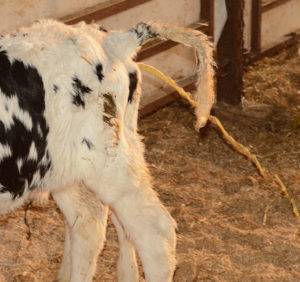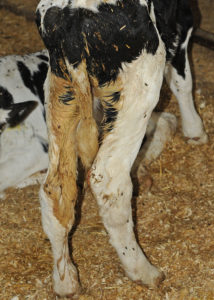Healthy Calf Conference
Follow to stay up-to-date on all Healthy Calf Conference updates. Speaker announcements, sponsorship information, registration announcements, and more.
By Dave Renaud DVM PhD
Department of Population Medicine
University of Guelph

Cryptosporidium parvum (C. parvum) is a parasite that commonly infects dairy calves in the first month of life. An Ontario study found that 41 per cent of calves were infected with C. parvum, however, there was a wide range of infection levels on the 51 participating dairy farms, with anywhere from 0 to 70 per cent of calves infected. Infection with C. parvum can lead to calf diarrhea and contribute to reduced average daily gain (ADG) and ultimately reduced milk production. Due to these consequences, it is important to lessen its occurrence on farm.
Producers should consider testing calves for diarrhea-causing agents when diarrhea is occurring at a higher than expected rate, or as a monitoring tool to determine which pathogens are responsible. To test for C. parvum, a fecal sample from an affected calf with diarrhea is collected and sent to a lab to determine the cause; in some cases analysis can be done directly at the veterinary clinic.
Calves with diarrhea caused by C. parvum don’t have a defined set of clinical signs, and they should be treated like other calves with diarrhea. Fluid therapy is the most important treatment to prevent dehydration due to diarrhea. The use of meloxicam is also indicated, as it has been shown to improve ADG in calves that have diarrhea. Antibiotic therapy is not indicated in every case and should be restricted to calves that are demonstrating systemic signs of disease such as a calf with diarrhea that is dull or has a depressed attitude. Work with your veterinarian to create a protocol that works best for your farm.

Preventing infection is the key way to manage or eliminate C. parvum on your farm. Hygiene is extremely important as C. parvum is transmitted from infective calves/cows that are shedding it into their manure, which gets ingested by calves. Research has demonstrated that the maternity area can be an important source for infection due to the accumulation of cow feces. Early separation of the calf (within one hour after birth) and an increased frequency of bedding changes will help to reduce the infection rate with C. parvum. Once calves move out of the calving area, a clean calf housing area is also extremely important. Cleaning calf housing and feeding equipment with soap or detergent as well as ensuring bedding is changed frequently can prevent spread between calves. Hygiene is particularly important in the summertime as C. parvum survives in the environment for months when there are warm temperatures and high humidity.
C. parvum could also be combated through nutrition. A higher plane of nutrition (eight litres of milk per day or higher) has been shown to maintain hydration, have faster resolution of diarrhea, and improved growth and feed efficiency in calves challenged with C. parvum. The higher level of nutrition will not only protect against C. parvum, but also a number of other calf diseases, and can lead to a higher ADG in the pre-weaning period.
There is also a product available, Halofuginone lactate, that can be used to reduce shedding of C. parvum and ultimately diarrhea in calves, however, additional hygiene measures need to be adopted to provide better control of C. parvum.
Once C. parvum has been identified on a farm, it is important to reduce the spread of this pathogen as it can lead to an increased number of diarrhea cases. Prevention is critical and this can be achieved through improved hygiene and plane of nutrition.
Follow to stay up-to-date on all Healthy Calf Conference updates. Speaker announcements, sponsorship information, registration announcements, and more.
The Codes of Practice are nationally developed guidelines for the care and handling of farm animals. They serve as our national understanding of animal care requirements and recommended practices.